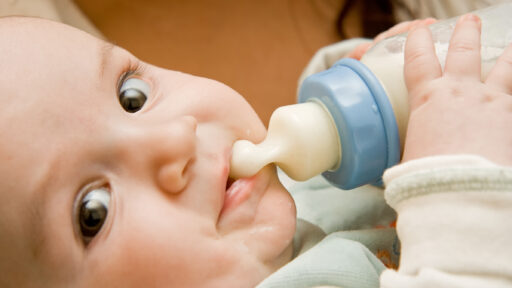Bisphenol A (BPA)

Bisphenol A, commonly known as BPA, is a chemical substance widely used to make polycarbonate plastics and epoxy resins. BPA is currently classified as reproductive toxicant category 1B under the EU CLP Regulation (EC) No 1272/2008. In this article, we will summarize the restrictions of BPA in consumer products in EU and USA.
Bisphenols are used to produce polymers and resins, which are then used to make plastic materials. They form a big family with many substances that have similar chemical structures and uses. Some of the most well-known ones are Bisphenol A (BPA) and Bisphenol S (BPS).
Due to their hazardous properties, the use of some bisphenols has been limited or is being limited in the EU to protect people’s health and the environment.
Bisphenols have been used in polycarbonate plastic and epoxy resin for decades.
Polycarbonate plastic is a strong and tough material that can be moulded at high temperatures. Products made of polycarbonate plastic include common consumer goods, such as re-usable plastic tableware and bottles for drinks, sports equipment, CDs and DVDs.
Epoxy resins are used to coat the insides of water pipes as well as food and drink cans to increase their shelf-life and avoid getting a metallic taste. They are also used in flooring, car body coatings and in adhesives.
Bisphenols are also used in thermal paper, inks, textiles, paper or in board.
Many bisphenols may damage fertility and disrupt the hormonal systems of both people and animals. They may also cause skin allergies.
The Candidate List of substances of very high concern (SVHC) contains three bisphenols.
BPA and BPB have been identified as endocrine disruptors for the environment and human health. BPA is additionally toxic for reproduction. 2,2-bis(4′-hydroxyphenyl)-4-methylpentane has been identified as toxic for reproduction.
Producers and importers of articles have to notify ECHA if their articles contain SVHCs.
BPA is classified in the EU as a substance that:
- causes toxic effects on our ability to reproduce (Repr. 1B);
- causes serious eye damage (eye dam. 1);
- may cause respiratory irritation (STOT SE 3); and
- may cause skin allergies (skin sens. 1).
- very toxic to aquatic life (aquatic acute 1)
- very toxic to aquatic life with long-lasting effects (aquatic chronic 1)
ECHA’s Committee for Risk Assessment (RAC) supported proposals to classify BPS and bisphenol AF (BPAF) as toxic to reproduction (Repr. 1B). This classification for BPS starts applying in November 2023. The opinion of RAC on BPAF is in the European Commission for decision-making.
2,2-bis(4′-hydroxyphenyl)-4-methylpentane may damage fertility and is very toxic to aquatic life. The substance also causes serious eye irritation.
In addition, many bisphenols are classified as skin sensitisers, and some are toxic to aquatic life.
Companies that supply bisphenols with harmonised classification – as well as any mixtures containing them – in the EU must classify and label them accordingly. This is to ensure that people and the environment are protected, and that safe handling and use is supported through consistent labelling that reflects the potential hazards.
To avoid situations where one hazardous bisphenol is replaced with another that may be equally harmful, ECHA and the Member States have assessed 148 bisphenols as a group.
To protect people and the environment, the authorities found that 34 bisphenols may need to be restricted under the EU’s chemicals legislation, REACH, as they may interfere with hormonal systems and affect reproduction. Either identification as substances of very high concern (SVHCs) or harmonised classification and labelling is proposed as a first step for these bisphenols to manage their risks. This number may change as more information is generated for these and other bisphenols that were lacking data.
There are also 26 bisphenols which are not suspected to be endocrine disruptors or toxic to reproduction. These bisphenols may still be regulated in consumer products because most of them are skin sensitisers
For many group members, more data is needed before their potential for endocrine-disrupting and reprotoxic properties can be assessed.
BPA has been restricted as a substance on its own and in mixtures intended for consumer use in the EU since March 2018. Its use in thermal paper has been restricted since January 2020.
However, companies have commonly used BPS to replace BPA in thermal paper. This is a concern as BPS is also suspected of damaging human reproductive and hormonal systems.
The French and Swedish authorities have proposed to restrict over 1 000 skin sensitising chemicals in clothing, footwear and other articles with similar skin contact. Bisphenols that have been identified as skin sensitisers would be included in this restriction if the Commission decides to adopt it.
BPA can be used in food contact materials in the EU. However, only a limited amount (0.05 mg/kg) is allowed to leach from the material into food.
BPA has been banned in infant feeding bottles across the EU since June 2011 and in plastic bottles and packaging containing food for babies and children under three years since September 2018.
In April 2023, the European Food Safety Authority (EFSA) published a new re-evaluation of the risks to public health related to BPA in foodstuffs.
There is a limit on the amount of BPA that is allowed to leach out of toys for children up to the age of three and in any toys that are intended to be placed in a child’s mouth. This migration limit is 0.04 mg/l of BPA.
